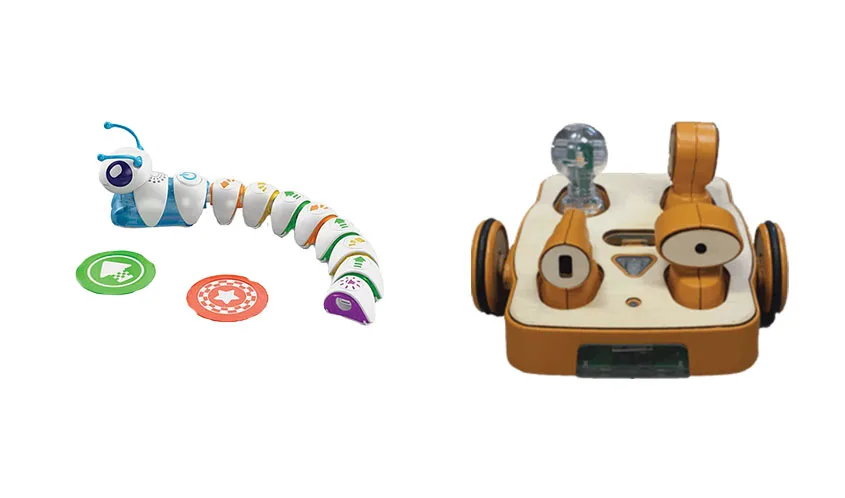Developing creative and educational STEM-focused toys.
by WENDY SMOLEN, founder, wendysmolen.com
Not too many years ago, all a toy needed to attract parents was to have the alphabet on it. It didn’t matter whether the letter activity was age appropriate, kid friendly, used uppercase or lowercase letters, or even made sense. If it featured the ABCs and the packaging shouted, “educational!” then parents saw it as a leg-up to Harvard admissions. Today, new letters replace the ABC hype — STEM.
Toddlers are now encouraged to learn advanced math, and preschoolers need to know the basics of engineering. There are stores with entire aisles devoted to STEM toys, including Barnes & Noble and Target. Discovery #Mindblown opened a STEM toy shop at the FAO Schwarz flagship store in New York City. There is no question that STEM is hot — but is a STEM-labeled toy really better than, for instance, basic building blocks?
Let’s start with the premise that kids learn when they play. Every toy teaches them something. Blocks, piled high until they topple, teach cause and effect. Is it necessary to call it physics?
Two years ago, Fisher-Price introduced the Code-A-Pillar, a build-your-own caterpillar toy, to encourage preschool-aged kids to arrange segments in different ways to “code.” It taught sequencing in a fun and age-appropriate way. Rather than label it STEM, it was part of Fisher-Price’s Think & Learn line.
Dr. Marina Bers spent more than 20 years studying child development at Tufts University and recently created KIBO, a coding toy for kids ages 4 to 7. She believes that coding — by any name — is the new literacy, and kids as young as 4 years old can, and should, learn it.
“No one questions why kids need to learn ABCs; however, we don’t expect every child to grow into a professional writer,” Bers says. “Likewise, coding is both an important skill and intellectual tool. Not all children need to grow into software engineers and programmers, but 21st century kids need computational literacy so they can become producers — and not just consumers — of digital artifacts.”
While Bers sees coding and STEM skills as critical for today’s kids to learn, she also stresses the importance of making sure toys provide opportunities for learning social skills, collaboration, critical thinking, and creativity. When developing KIBO, she used a pedagogical approach that envisioned coding as a playground — an open-ended environment in which kids could be creative, express themselves, explore alone and with others, learn new skills, and problem solve, all while having fun. “Children were able to use KIBO to explore a variety of interdisciplinary content including literacy, history, and more,” she says.
No doubt, STEM-labeling is a magnet for today’s consumers. But calling a toy “STEM” is no more a guarantee that it’s good for children than plopping the ABCs into a cereal bowl. The label may get a parent to pluck it off a shelf, but it won’t get a kid to love it. The integration of research and innovation, fun, and function is what drives success. STEM hype is often just that: Hype. A good toy — STEM or not — has these ABCs built into its DNA.
A: Age-Appropriate Skills
Bers’ research with KIBO shows that kids as young as 4 years old are capable of successfully building and programming robots. As kids get older, they can master increasingly complex concepts and skills, including repeat loops, sensors, and conditional statements. Manage your age-appropriate expectations, as well as those of your consumers.
B: Balance Between Tech and Non-Tech Play
Basic blocks can teach coding just as effectively as a Raspberry Pi. STEM toys don’t need to have every element of science, technology, engineering, and math. Sometimes, one well-executed skill set is sufficient.
C: Critical Thinking, Creativity, and Collaboration
Kids spend enough time alone in a room staring at a screen. More toys that invite community and creativity are definitely needed in the marketplace.
[author] [author_image timthumb=’on’]https://toybook.com/wp-content/uploads/2018/02/wendysmolen.png[/author_image] [author_info]Wendy Smolen has spent more than 20 years playing in the toy industry. She co-founded Sandbox Summit, an idea forum focused on the intersection of play, learning, and technology. She currently works with companies and organizations to create playful solutions that engage kids and families in innovative and impactful ways.[/author_info] [/author]
This article originally appeared in the July/August 2019 issue of the Toy Book.

